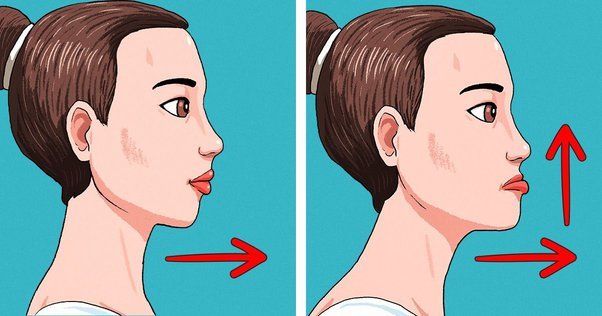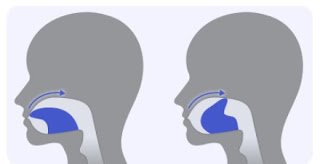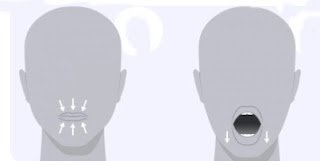Snoring and obstructive sleep apnea occur due to floppy airway muscles, poor tongue positioning (“tongue posture”), and breathing through the mouth during sleep. Mouth and throat exercises can tone up the airway and tongue muscles while promoting breathing through the nose.
Like how going to the gym regularly can tone up your arms, regular mouth and throat exercises will add strength to your mouth and airway muscles. Muscles that are tauter are less likely to be floppy and flutter.

Technically, these exercises are called “myofunctional therapy” or “oropharyngeal exercises”. The oropharynx is the area at the back of your mouth that includes the back of the tongue, sides of the throat, tonsils, adenoids, and soft palate (the soft muscular part at the back of the roof of the mouth).
Researchers have found that doing repetitive oropharyngeal exercises while you’re awake can help keep the tissue from becoming excessively floppy and vibrating during sleep. Several studies have shown that toning these muscles has been shown to helps reduce snoring and milder forms of obstructive sleep apnea.
Who Can Benefit From Mouth and Throat Exercises for Snoring?
The benefits of these mouth and throat exercises (“myofunctional therapy”) have been widely studied in people who snore or have mild to moderate obstructive sleep apnea. People with obstructive sleep apnea have the most benefit from myofunctional therapy when used in conjunction with a CPAP machine or after surgery.
It is important to note that even for mild snoring, mouth and throat exercises are not always effective. Individual factors, like the size and shape of a person’s mouth, tongue, and throat, may affect how well these exercises work.
Oropharyngeal exercises may be less effective if a person’s snoring is related to alcohol or the use of sedatives that cause relaxation of the muscles in the back of the throat.
How Often Do You Need To Do Mouth Exercises for Snoring or Sleep Apnea?
Based on the existing research, the best bet is to do mouth exercises for at least 10 minutes per day for three months in order to notice a reduction in snoring or OSA. Most people perform the exercises two to three times per day.
Most research studies demonstrate benefits after 3 months3 of mouth and throat exercises. Another study4 showed that performing myofunctional exercises as part of a smartphone game for at least 15 minutes per day was effective in improving snoring.
As with any workout, it takes time to build muscle, so you shouldn’t expect anti-snoring exercises to work overnight. The good thing about these exercises is that you don’t need any special gym equipment–you can do them almost anywhere.
Are There Side Effects to Mouth and Throat Exercises?
Some people may find myofunctional therapy to be tedious or silly, but there are virtually no physical downsides.
Health risks could arise if people use mouth exercises instead of other prescribed treatments for their snoring and obstructive sleep apnea. It is recommended to talk with a doctor before starting or stopping any type of therapy for snoring or sleep apnea.
Give this exercise a try and see if it helps. There are many stop snoring solutions and throat exercise programs on the market. Do some research before you purchase one.
Here is the good news.
Stop Snoring in 3 Minutes — Starting Tonight
The Stop Snoring and Sleep Apnea Program is a straightforward program that teaches you a series of specific exercises that can eliminate your snoring for good. It’s a comprehensive system that comes with a variety of sleep solutions and 24 exercises.
However, the first step is to determine the type of snorer you are and use the corresponding regime. Don’t worry — the program guides you through the process of identifying the source of your snoring, so you can pick the appropriate regime to follow.
The exercises only take 3 minutes a day to complete and the program provides you with easy step-by-step instructions so you know exactly what to do.
To give you an idea of what you can expect from the program as a whole, here’s a more detailed look:
Diagnosing Your Snoring Problem
The first section of the program gives you an abundance of information about all types of snoring and why they happen. This helps you narrow in on the root cause of your snoring. It also covers the various forms of snoring and why they’re happening.
Throat Closing Up
Tongue Causing Snoring
Nasal Problems
Jaw Causing Snoring
The Soft Palate Being Too Weak or Too Big
List of Programs to Choose from
Since the program covers all forms of snoring, it provides you with different treatment plans for you to choose from. You can also choose which regime to follow based on how much time you have. These are the other options available:

3 Minutes a Day
7 Minutes a Day
12 Minutes a Day
18 Minutes a Day
30 Minutes a Day
60 Minutes a Day
More than an Hour a Day
Exercises
You also receive a list of all of the exercises that make up the regimes mentioned above. You can create your own routine if you’d like or use this section to learn all of the techniques to see which ones you like best:

3 Jaw Exercises
5 Throat Exercises
3 Tongue Exercises
5 Body Exercises
2 Breathing Exercises
2 Relaxation Exercises
3 Attitude Exercises
1 Communication Exercise
Sleep Positions
The program also provides you with some proper sleep positions that can further help eliminate your snoring.
2 Sleep Positions
Additional Topics
The Philosophy Behind the Program
What Causes Snoring
How the Exercises Work
Secondary Exercises
Recommendations For Completing The Seven Programs Included
Here is a video that explains it better than I can https://bit.ly/PSnoringCure